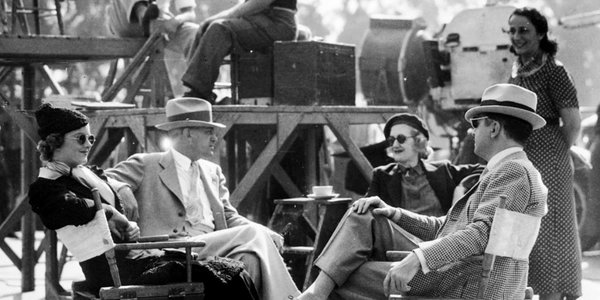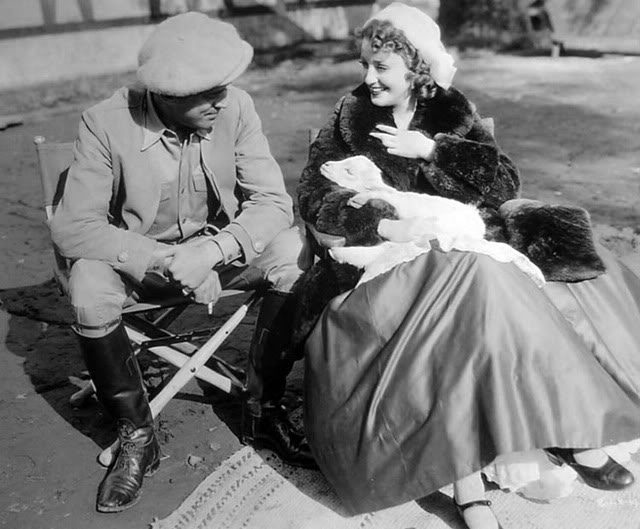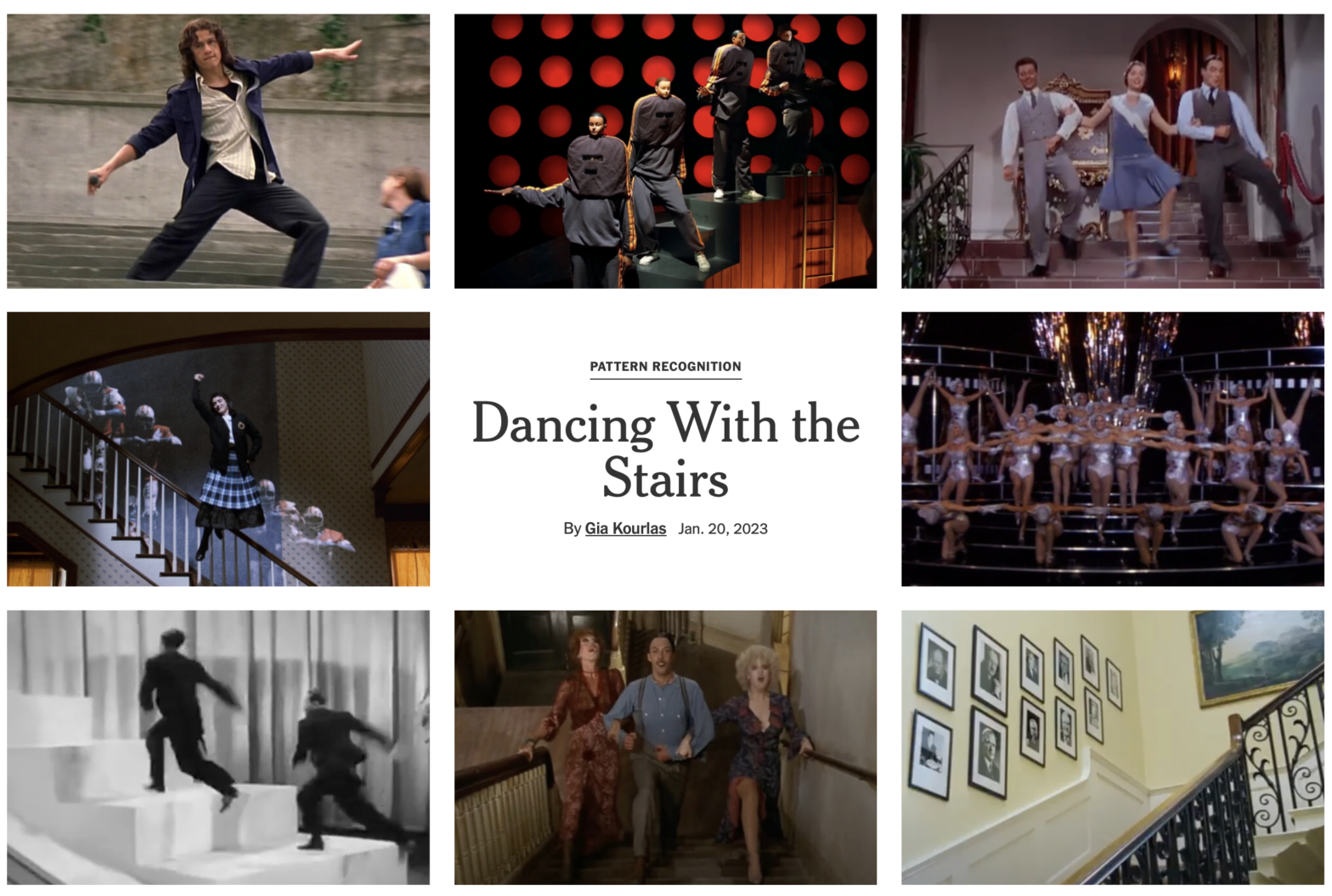The New York Times: Dancing with the Stairs
Tag: Movies
The Archaeologist on the River Kwai
Cyler Conrad writes about Dutch archaeologist Hendrik Robert van Heekeren, who after being captured by the Japanese during World War II, managed to collect prehistoric artifacts while a prisoner-of-war forced to work on the infamous Bridge on the River Kwai in Thailand: An Archaeologist on the Railroad of Death.
van Heekeren was born in Java in 1902 and became interested in archaeology while working on a tobacco plantation.
Through financing his own research and fieldwork, van Heekeren significantly contributed to the study of ancient Indonesia prior to the outbreak of the war. But, like many of his Dutch compatriots, he was captured after the Japanese invaded Java in 1942. By February 1943, he was forced to work on the Railroad of Death.
Cyler Conrad, Sapiens, May 5, 2021
The New York Times also wrote about the bridge and the archaeologist in 1972: The Kwai Bridge: The Reel and the Real
Dr. van Heekeren was working among stones dredged up from the Kwai for use in the construction of the bridge’s foundation when his experienced eye picked out an object that he immediately recognized as a Stone Age artifact. From that day until the day he was freed, he continued to find, and hide from his captors, numerous other artifacts. When he returned to the Netherlands after the war, he wrote a book about his discoveries in Thailand’s Kanchanaburi Province
Alvin Smith, The New York Times, December 17, 1972
van Heekeren’ books include The Stone Age of Indonesia (1957) and The Bronze-Iron Age of Indonesia (1958). He died in 1974.
E-Biking Crystal Lake on Friday the 13th

Serendipitous is not the right word to use when you find yourself riding your bike alone in the woods around Crystal Lake on Friday the 13th. Fortunately, this was not Camp Crystal Lake, the stomping grounds of infamous axe-murderer Jason Voorhees. That’s up in north Jersey.
This Crystal Lake Park is near Bordentown in central Jersey. The park is mostly farm fields, with some steep wooded areas along the bluff overlooking Crystal Lake. To get to the park, you do have to drive down Axe Factory Road. I saw no actual axe factory, nor, I’m happy to say, any axe-wielders.


One-Take Woody: Behind the Scenes Photos of Classic Movies
Director W.S. Van Dyke had a reputation for getting things right the first time. Two movies he directed in the 1920s were shot on location in Tahiti. For Trader Horn (1931), he spent seven months filming in East Africa. His best known movies, however, are The Thin Man (he also directed three of the sequels), Tarzan the Ape Man (filmed in Hollywood, it used stock footage from Trader Horn), and several Jeanette MacDonald and Nelson Eddy films. ClassicMovieHub.com has several behind-the-scenes photos of Van Dyke at work.


W.S. Van Dyke with Myrna Loy & William Powell on the set of After the Thin Man (1936). Source: classicmoviehub.com.

Rhythm on the River
We’re overdue for some Bing on this page. Crosby not only sings, he provides percussion for Rhythm on the River, from the 1940 film of the same name.
The Ancient Greek Inspiration for the Legendary Leg Lamp?
Does the Royal Ontario Museum have the real inspiration for the Leg Lamp from the classic movie A Christmas Story?

The lamp in the movie was allegedly inspired by a Nehi soda advertisement, but the original source must be this Archaic Greek leg vase, on view at the Toronto museum.
For the more recent history of the leg lamp, see A Christmas Story House.
The Shovel is my Pick
Pick the right tool for the job:
From Abbott and Costello Meet the Mummy (1955)
If the shovel is your pick, here’s a good one.
Mercy, the Mummy Mumbled: the 1918 African American Silent Film
With Halloween approaching, here’s a shoutout to an early mummy movie. Mercy, the Mummy Mumbled, is an all-black silent film from 1918. Several silent movies featured mummies as plot devices; The Egyptian Mummy, for example, was released in 1914 but Mercy is likely the only one made by African-American filmmakers for African-American audiences.
The plots of the two films are very similar: a mad scientist is willing to pay big bucks for a mummy to experiment on; a young man needs money to marry his girlfriend; a fake mummy is created. Mercy adds two Egyptian secret agents tracking down their country’s stolen artifacts to the story, all within an 11 minute run time.
Mercy, the Mummy Mumbled was released by the short-lived Ebony Film Corporation of Chicago and is included in Pioneers of African-American Cinema box set (but Mercy is only on the Blu-ray collection, not on the DVD collection) by Kino Lorber. The five discs include movies from as early as 1915 and as late as 1946. See the New York Times review for more details: Black Filmmaking Aborning. Much of the film can also be viewed on YouTube, and stills from Mercy can be seen at the DAARAC site. The Egyptian Mummy, released by the much larger Vitagraph company, can be streamed on Amazon Prime.
“It takes a monster from outer space, to make my baby want my embrace”
The Diamonds sing about the positive effect of monster movies. The Canadian quartet recorded Batman, Wolfman, Frankenstein or Dracula in 1959. The song was written by Roy Alfred, who also wrote the lyrics for The Hucklebuck, as well as several songs that tried to hop on the rock and roll craze for singers like Kay Starr (The Rock and Roll Waltz), Tennessee Ernie Ford (Rock, Roll, Boogie), and Nat “King” Cole (When Rock and Roll Come to Trinidad).
For more Halloween music, check out Tain’t No Sin to Take off your Skin and these three lesser-known songs.


